[ page 5 ]

Buccaneer models in 1/72 scale
page 2
page 3
page 4
Airfix came end 2019 with a brand new state of the art kit #A06021 for a 1/72 Buccaneer S.2C.
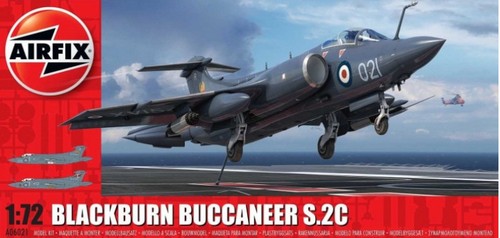
In this kit there are about 140 parts in light grey/blue soft plastic. The nose section is a separate assembly. Stores/ weapons in the kit are a pair of Matra rocket pods, some bombs and very good slipper tanks are included. (But no additional stores like missiles as in the old kit).
(It appears that the model is also prepared for a RAF kit as it has some structural re-enforcements with some small externally visible plates on the airframe. These are probably typical for the updated re-enforced RAF machines; Airfix announced a RAF release of the kit end 2020 with RAF decals and some extra parts like the enlarged bay door, extra stores like bombs and ECM).
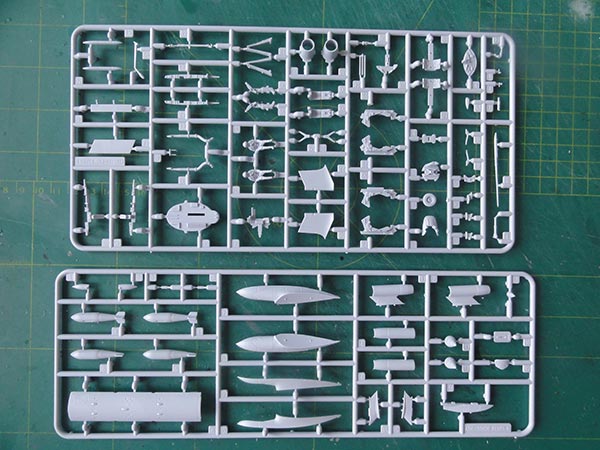

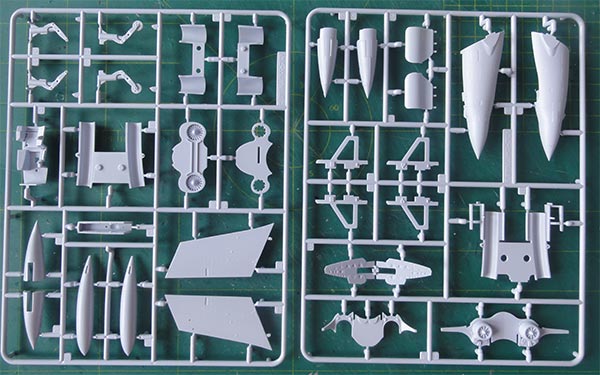
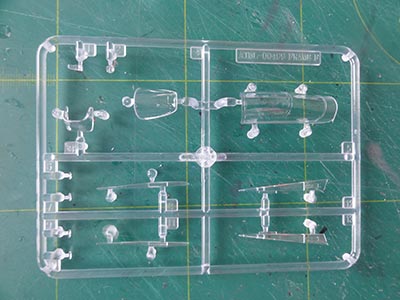
The canopy and windscreen are separate parts so the canopy can be set slided open. The wing tips are in transparant plastic as it has some lighting equipment.
The kit has the nice option to set the wing folded with separate parts. But when not folding the wing, you get a good straight wing part instead, making things much easier.
The paint schemes are shown on a separate glossy printed colour sheet and the about one hundred smaller markings/ stencils on another printed sheet. Very nice.
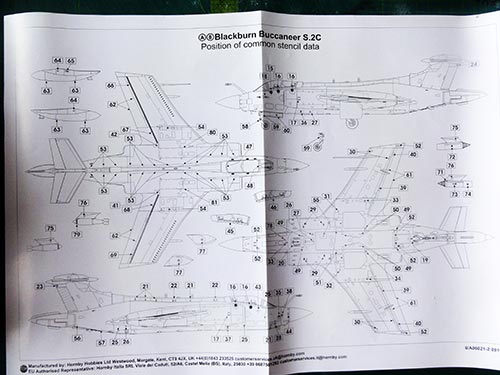
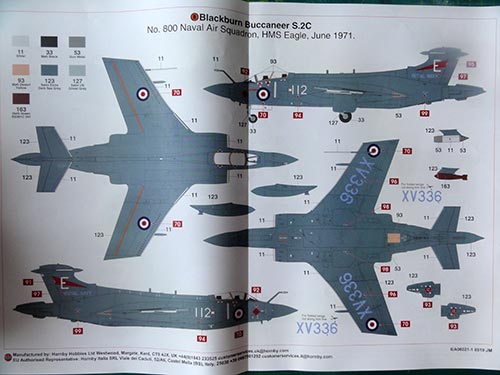
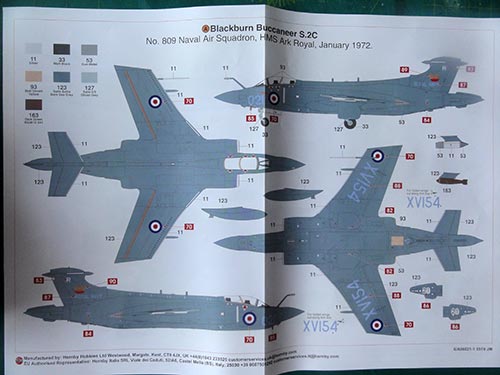
The end 2019 release #A06021 has decals for two FAA S.2C Buccaneers in an overall Extra Dark Sea Grey scheme:
- no. 800 squadron at HMS eagle, June 1971;
- no. 809 squadron at HMS Ark Royal, January 1972.
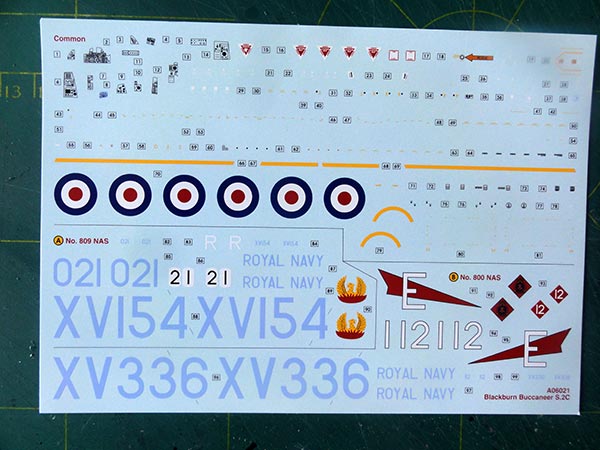
The Airfix kit decals are excellent.
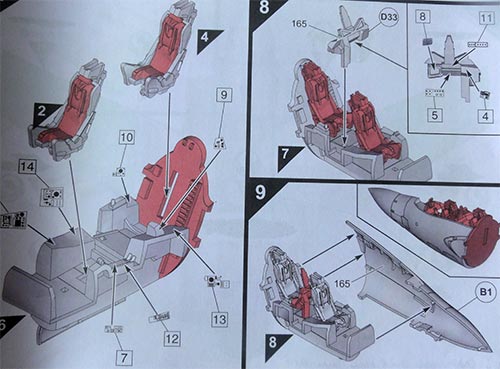
The 16 page kit instructions are impressive and extracted from the 3D design drawings. You need to study these well as they are a bit complex. But there are no parts' locator diagrams.
The detail colours are indicated in Humbrol paint numbers: 11 = silver, 33 = matt black, 53 = gun metal, 85 = black, 165 = medium grey, 196 = lighter satin grey; the overall Extra Dark Sea Grey is Humbrol 123.
The fit of the parts is very good. It is however essential to carefully remove all sprue gate bits as otherwise parts will leave small gaps. The kit requires just some tiny amounts of putty but some sanding is needed with very fine sand paper and polishing sticks to get flush results at joints. For example, the complex slipper tanks have 3 sections but these fit very well with minimal sanding. And than you really get an accurately shaped model.
The cockpit interior as per kit is well detailed but you only get decals for the instrument consoles. The later used Martin Baker mk.6 BSB ejection seats look good but the face curtain "pull chords" are missing.
The kit has nice internal intake ducts and the intake rings are separate parts giving a good fit.
The smaller details are fine in the kit, such as the ARI RWR fairings below the wing leading edges.
The rear airbrakes can be set deployed open or closed with seperate extra parts. (When set open, I recommend to drill open the holes though in part #B13).
The rotating bomb bay door can be set open (simply do not install than part #E6) and shows nice details inside.
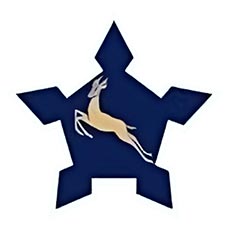
I opted to make the kit in a different scheme as a Buccaneer S. mk 50 of no. 24 squadron the South African Air Force. It has decals for aircraft "426" based at Waterkloof in 1970.
From my modelling friend Bas I got the SAAF decals from the older Airfix kit in release #A04049 from 2010. Thank you Bas!
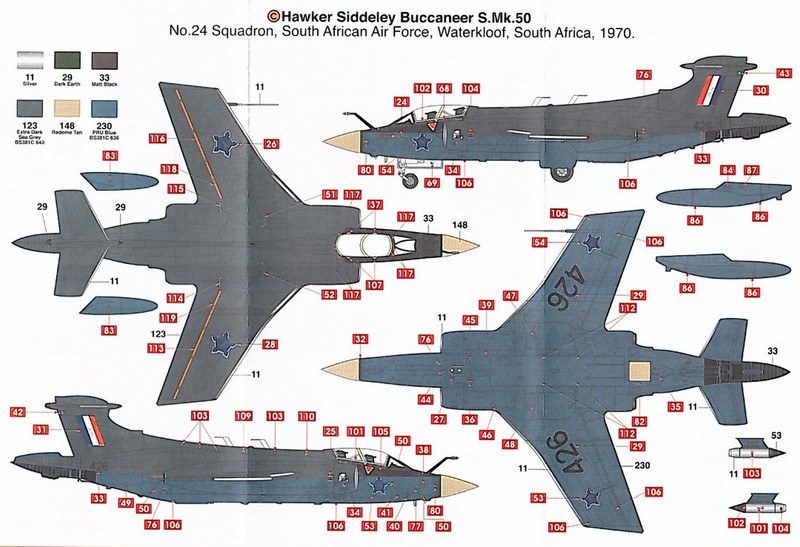
I had an after market Airwaves etched detail set #72-11 as well though designed for the older Airfix kit; some bits will also be used in this newer model.

Assembly of the kit was rather straight forward.
The aileron edges were enscribed a bit deeper with an OLFA scriber.

The kit cockpit is really nice, but I used the etched metal Airwaves instrument panels and side consoles. These needed a bit trimming. The result is great. For the later style MD mk.6 seats, the pair of pull rings in the Airwaves set were installed on the kit seats (these rings can obviously easily be made from scrap was well).
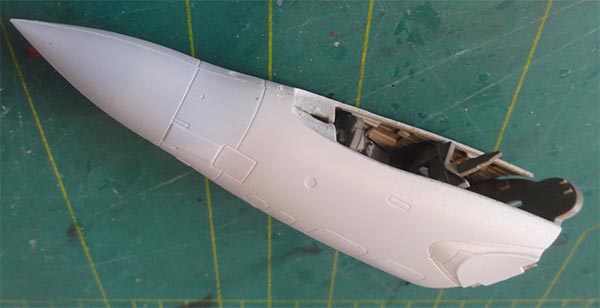
The wing will not be set folded on this model.
NOTE: for the SAAF Buccaneer S.50 the wing can also be set folded manually but the aircraft did not have the automatic folding systems; so you may than need to adapt a bit the fold hinge parts.
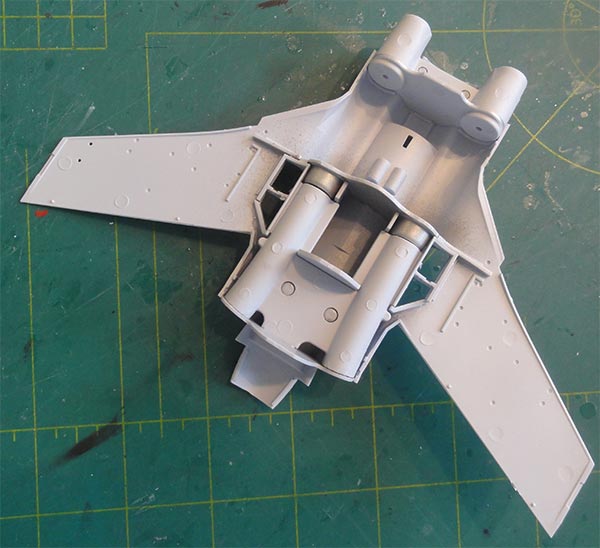
Intake ducts and exhausts are very nicely done in the kit and also the gear bays show detail. There are not that many details in the bays on real Buccaneers.
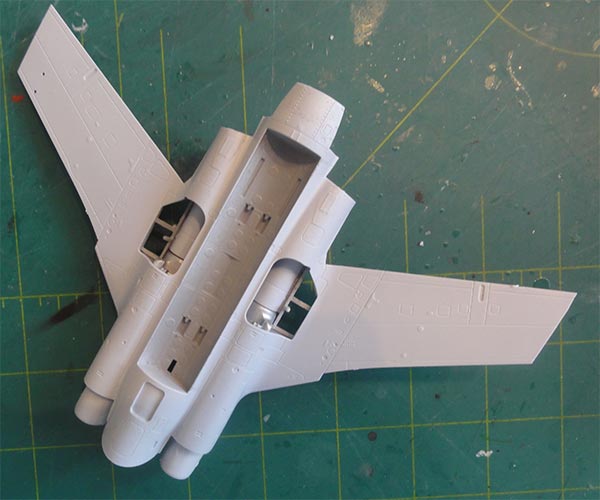
I opted to set the airbrakes open using some bits from the Airwaves set. (If using the good kit parts, I recommend to drill open the holes though in part #B13).
This is how: the kit airbrake strakes were cutt off from part #B13 and glued on the fairings #C15+C16 and the Airwaves etched panels used after some trimming. For the remainder, the kit airbrakes parts were simply used.
The airbrakes were NOT yet installed, do after painting.
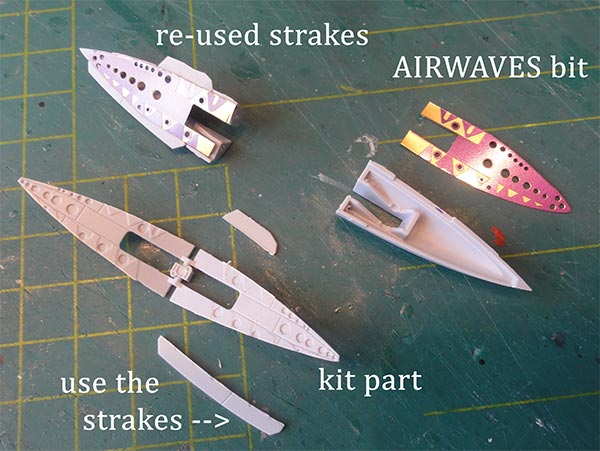
Basic fuselage and wing assembly was done.
On parked Buccaneers the inboard flaps droop down. Airfix provides these as seperate parts #D26 + D27 but does not indicate to glue these drooped down with landing gear extended for a parked aircraft. Piece of cake!
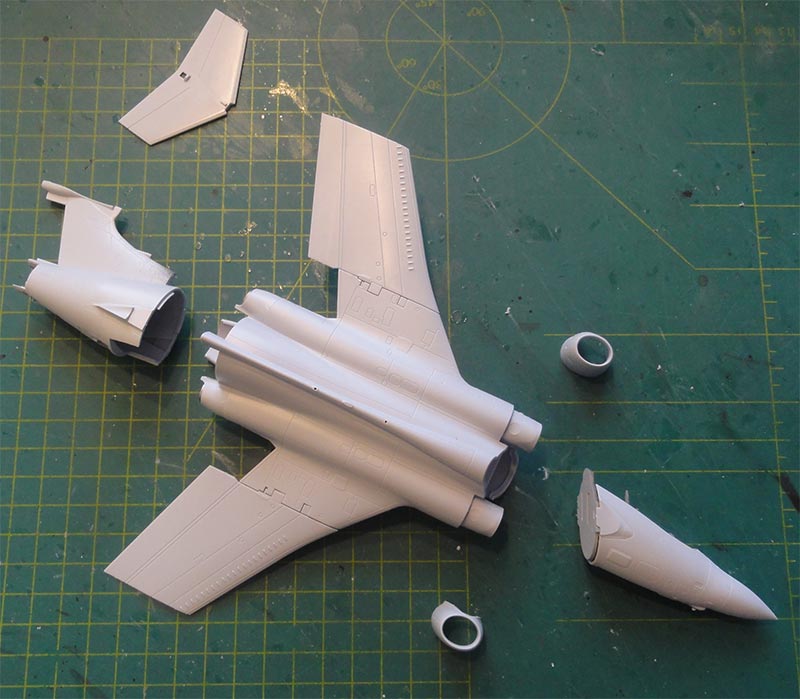
For the SAAF Buccaneers do not use the ARI parts #D50+51 as seen in STEPs 59+60.

The kit landing gear was not yet installed, first do puttying, sanding and painting.

Small amounts of putty were needed near the arrestor hook recess and particularly the rear fuselage vertical joint. Some sanding and polishing the joints was needed at intakes, nose section-rear fuselage joint, intakes and wing tip panels. Some very tiny gaps were closed with White Glue.
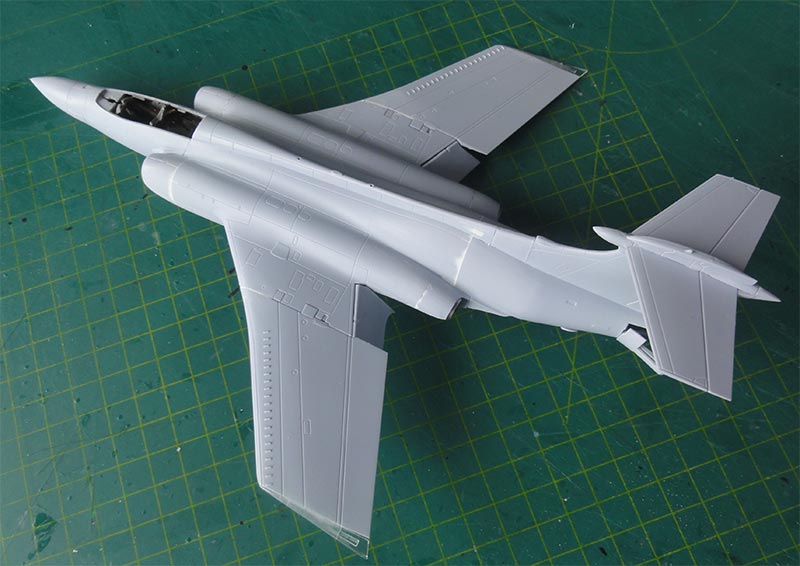
The SAAF aircraft could also be fitted with longer slipper tanks. I do not know if these were "full fuel" tanks giving longer flying range or had another purpose. It would be nice to fit the SAAF model with these longer tanks. I think they were simply "extended" longer than the standard ones.
Note: Airfix release #A04049 had these tanks included with some extra's but I did not have this kit. Also, I was not sure if the basic shape of these parts were OK. So it was decided to make my own.
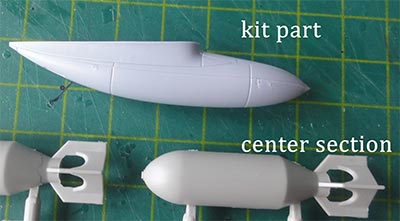
How? First, the kit tanks were assembled. Next, with a razor saw a vertical cut was made 3 mm in front of the wing joint fairing. A section was inserted of a "guestimated 16 mm" length and "guestimated 10,3 mm non-oval egg like" cross section. I found a couple of older bomb parts in the spares box for these extensions. All was puttied and sanded, giving the longer slipper tank of which a pair was made.
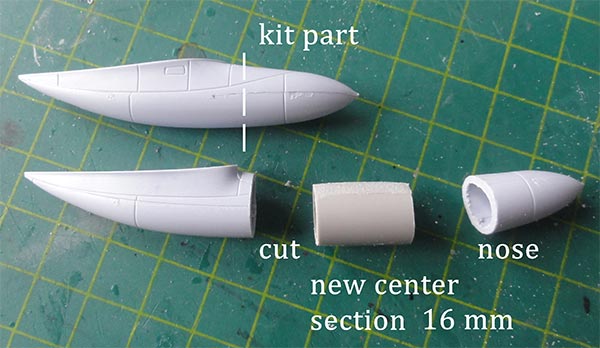
(NOTE: alternatively, Odds and Ordnance had an aftermarket set #72003 for these that also included the BS.605 take-off rockets particular for the SAAF).
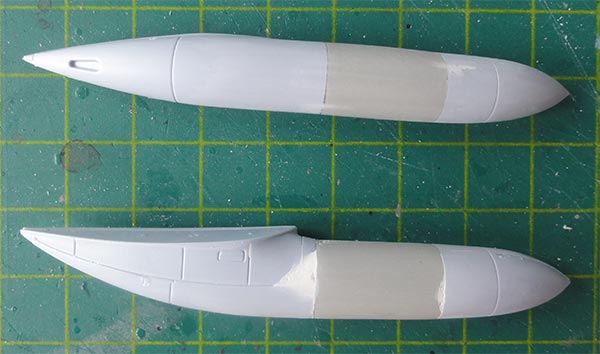
The pair of tanks were installed.
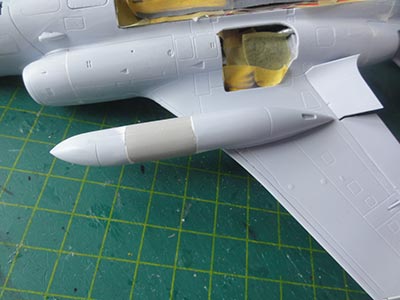

The cockpit got some details using the Airwaves set as I had the set anyway.

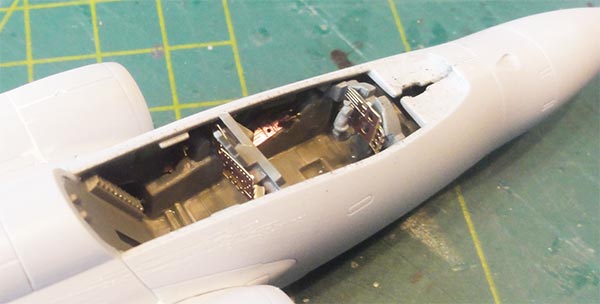
The instruments and details will be painted later on.
Masking was done of the cockpit and lower bays.

Next, the model got a base grey coat to check for any small flaws. I airbrushed Revell Aqua 75 "stein grau".
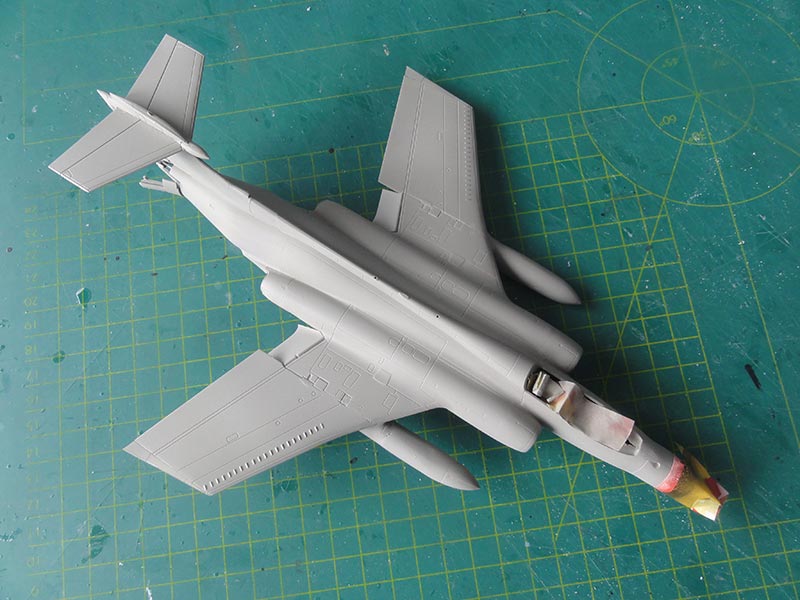
On to next steps....
The SAAF Buccaneers had lower PRU Blue BS381C 636 coloured surfaces and upper Extra Dark Sea Grey painted surfaces.

Airfix recommends respectively Humbrol 230 and 123. As I airbrush acrylic paints, Gunze Sangyo H333 was used for Extra Dark Sea Grey. For the PRU Blue I made a paint mix of Gunze with 50% H25 + 50% H56 that looked good.

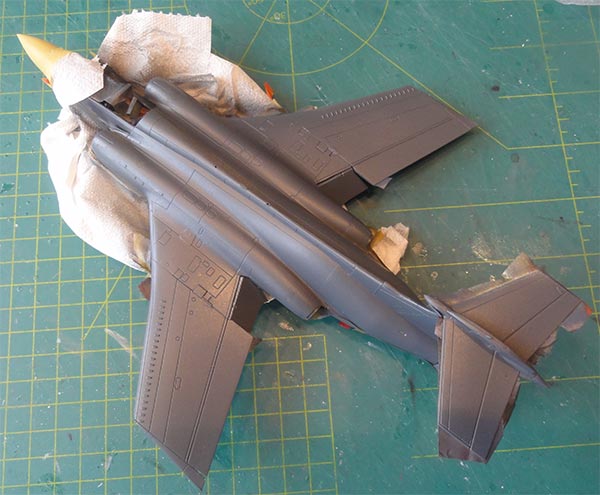
The areas next to the cockpit on SAAF Buccaneers often were black just as the lower fuselage area near the arrester hook. These areas were airbrushed after masking.

The leading edges of the wing and stabilizer are in metal as well as the intake rings, this was all hand painted. On the inboard upper wing, an aluminium decal stripe was added.
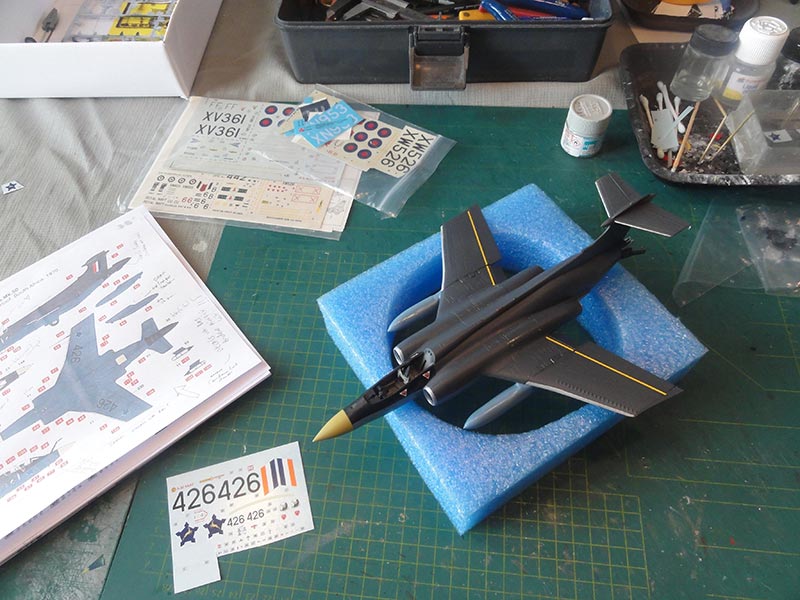
Decalling with SAAF decals of kit #A04049 was done. I added an extra pair of triangular markings on the cockpit side. The canopy was painted including an off white thin (sealing) edge. Around the sand painted nose I added a black decal stripe (so not the kit decal).

The model got now the final details.
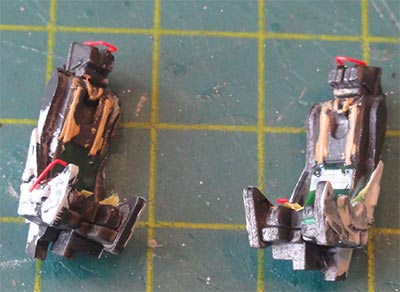
- cockpit was completed. I had not yet installed the kit seats and had some trouble to fit these in. I simply removed their lower locating lugs and now installment was not issue. I added some straps made from tape and the single pull ring on top of each seat;
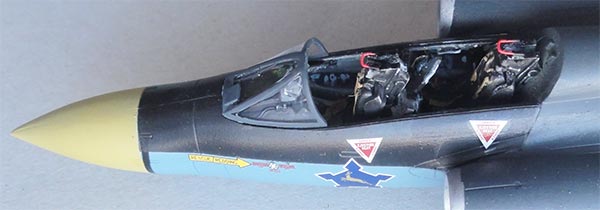
- landing gear was installed;

- bomb bay was kept open, some wash added;
- airbrakes were set deployed open;
- rocket pods were installed;
- tank boom was set as per kit and painted;
- tiny bits added such as pitots, antennas and anti-collision lights;
- two larger antennas on the fuselage spine from scrap;
- inside the forward canopy frame, two tiny grip/ handles were added from very thin sprue.
For the remainder, the model some thinned wash in some recessed panels. And finally got an airbrushed semi gloss varnish with a mix of 95% Johnson Future/ Pledge and 5% Tamiya X-21 flat base matting agent.
The canopy was set and now a nice SAAF Buccaneer is in the World Air Forces model collection.
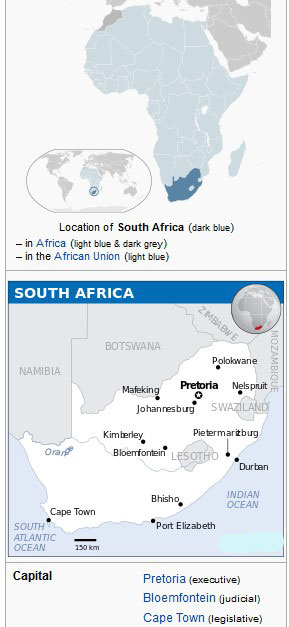



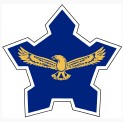
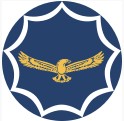
[area: 1,221,000 sq.km | population: 60 million | capital: Pretoria | GDP 6,500 USD per capita nominal ]
Some 16 Buccaneers were acquired end 1960s. For more information about the South Africa Air Force, look at the Mirage page here...
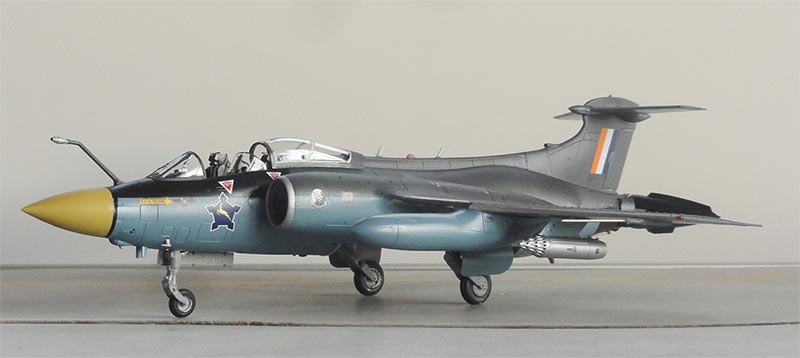

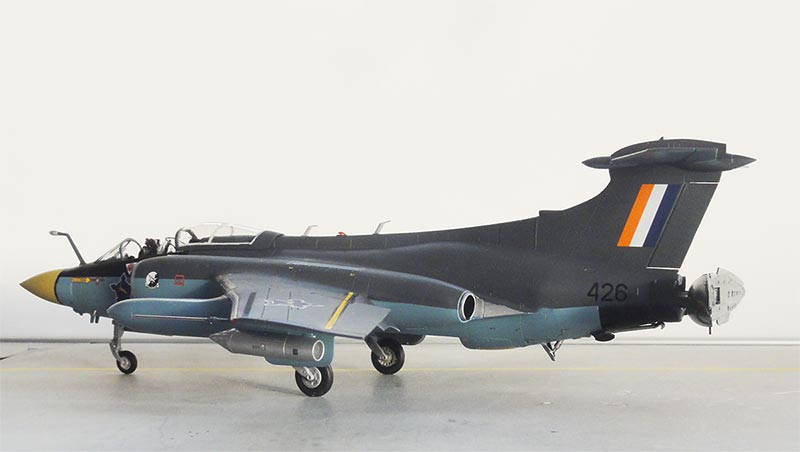
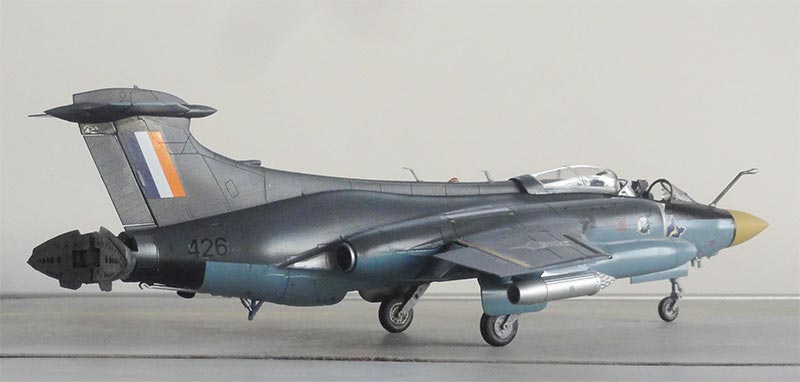
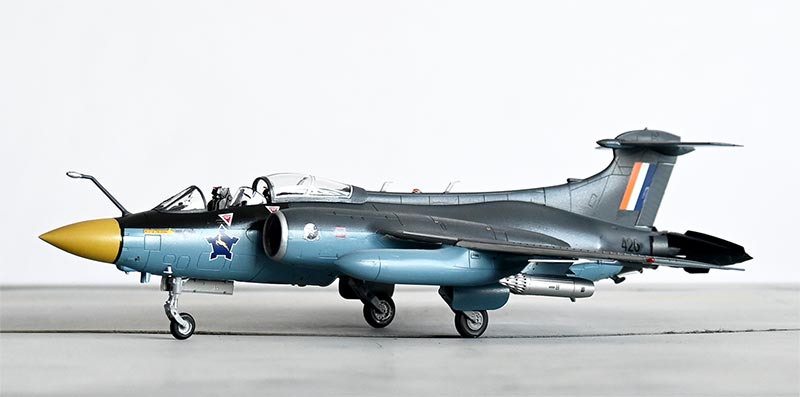

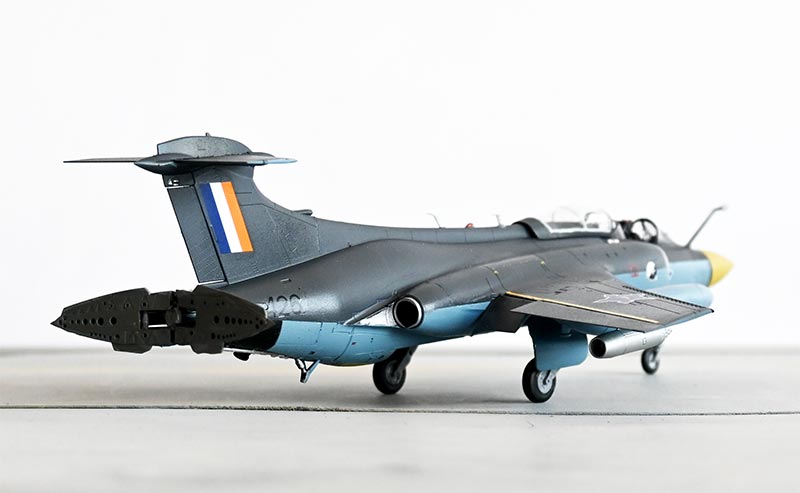
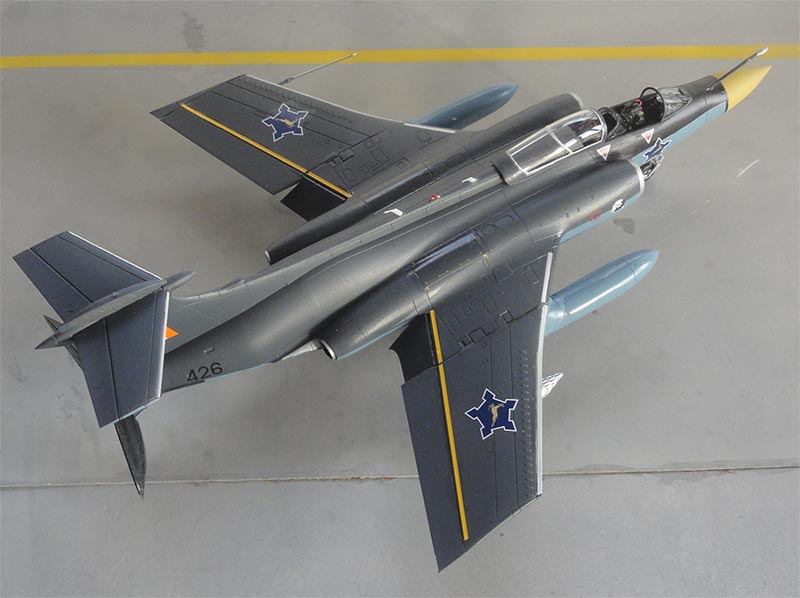
Buccaneer mk.50, SAAF no.24 squadron, South Africa, 1970
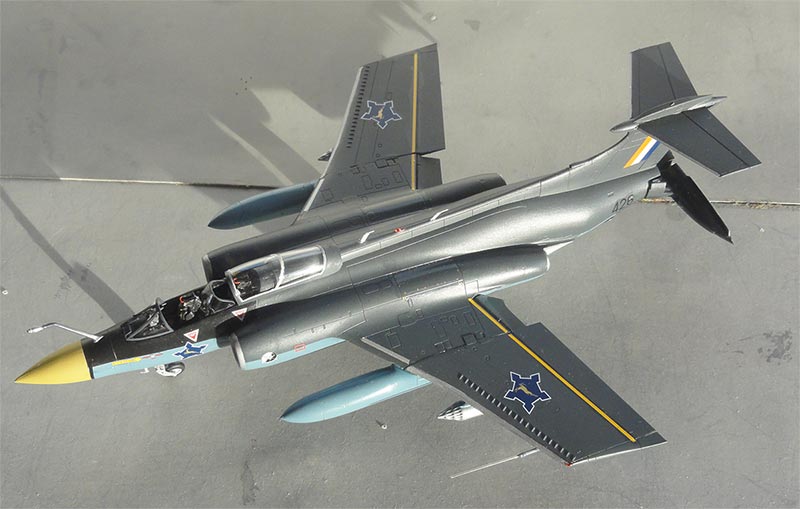
...set at Waterkloof air base near Pretoria, South Africa
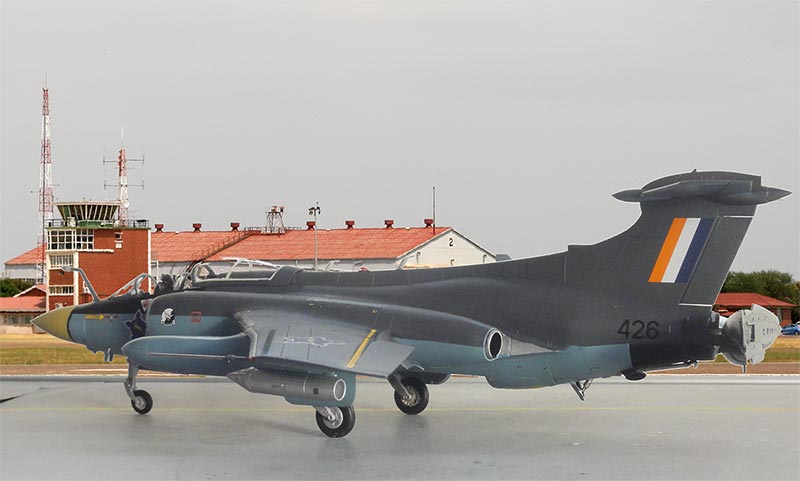
Back to Models page....

(c) Copyright Meindert "designer"/ All rights reserved. Your comments are welcomed by webmaster
Created this page
December 2, 2020